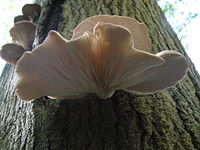
Influence of persulfate on transformation of phosphorus and heavy metals for improving sewage sludge dewaterability by hydrothermal treatment
Sign Up to like & getrecommendations! Published in 2022 at "Environmental Science and Pollution Research"
DOI: 10.1007/s11356-022-18624-1
Abstract: Activated persulfate oxidation has been proven to be an efficient advanced sludge treatment technique to improve sludge dewaterability. This study investigates the influence of persulfate on the transformation of phosphorus (P) and heavy metals (HMs)… read more here.
Keywords: hydrothermal treatment; sludge dewaterability; persulfate; treatment ... See more keywords

Enhancement of sludge dewaterability with filamentous fungi Talaromyces flavus S1 by depletion of extracellular polymeric substances or mycelium entrapment.
Sign Up to like & getrecommendations! Published in 2017 at "Bioresource technology"
DOI: 10.1016/j.biortech.2017.08.185
Abstract: This study was conducted to explore the mechanism of dewaterability improvement of waste activated sludge by the filamentous fungus Talaromyces flavus S1. When the fungal spores were inoculated to the sterilized sludge, the sludge dewaterability… read more here.
Keywords: sludge dewaterability; extracellular polymeric; mycelium; sludge ... See more keywords

Improving sewage sludge dewaterability with rapid and cost-effective in-situ generation of Fe2+ combined with oxidants
Sign Up to like & getrecommendations! Published in 2020 at "Chemical Engineering Journal"
DOI: 10.1016/j.cej.2019.122499
Abstract: Abstract Zero-valent iron (ZVI) combined with oxidants is a promising conditioning strategy for improving sewage sludge dewaterability. However, challenges, such as a low dewatering rate and utilization efficiencies of ZVI, restrict further application of ZVI/oxidant… read more here.
Keywords: zvi oxidants; treatment; zvi; sludge dewaterability ... See more keywords

Enhanced sludge dewaterability by a novel MnFe2O4-Biochar activated peroxymonosulfate process combined with Tannic acid
Sign Up to like & getrecommendations! Published in 2022 at "Chemical Engineering Journal"
DOI: 10.1016/j.cej.2021.132280
Abstract: Abstract The high moisture content of sludge is a key factor limiting its subsequent treatment and disposal. Herein, a novel method of MnFe2O4-biochar (MFB) activated peroxymonosulfate (PMS) combined with tannic acid (TA) was conducted to… read more here.
Keywords: pms; sludge dewaterability; mnfe2o4 biochar; sludge ... See more keywords

Effective gel-like floc matrix destruction and water seepage for enhancing waste activated sludge dewaterability under hybrid microwave-initiated Fe(II)-persulfate oxidation process.
Sign Up to like & getrecommendations! Published in 2019 at "Chemosphere"
DOI: 10.1016/j.chemosphere.2019.01.037
Abstract: Chemical conditioning before mechanical dewatering is an indispensable step to enhance the waste activated sludge (WAS) dewaterability and solid-liquid separation. Feasibility of utilizing Fe(II)/S2O82- oxidation integrated with microwave irradiation (MW) in improving gel-like floc destruction,… read more here.
Keywords: sludge dewaterability; oxidation; water; destruction ... See more keywords

Deciphering the impacts of composition of extracellular polymeric substances on sludge dewaterability: An often overlooked role of amino acids.
Sign Up to like & getrecommendations! Published in 2021 at "Chemosphere"
DOI: 10.1016/j.chemosphere.2021.131297
Abstract: An investigation was conducted for waste activated sludge pretreated by different methods (e.g., ultrasonic, thermal, ozone, and acid/alkaline) in order to establish correlations between amino acids and parameters related to sludge dewaterability (e.g., capillary suction… read more here.
Keywords: extracellular polymeric; sludge dewaterability; amino acids;

Optimisation for enhancing sludge dewaterability using different conditioners
Sign Up to like & getrecommendations! Published in 2020 at "Journal of Environmental Engineering and Science"
DOI: 10.1680/jenes.20.00022
Abstract: Dewatering of alum sludge from drinking-water plants is proving to be a major challenge because of the large amounts of residual sludges produced annually. In the last few years, most studies have ... read more here.
Keywords: sludge dewaterability; using different; enhancing sludge; sludge ... See more keywords

Bioflocculants as Alternative to Synthetic Polymers to Enhance Wastewater Sludge Dewaterability: A Review
Sign Up to like & getrecommendations! Published in 2023 at "Energies"
DOI: 10.3390/en16083392
Abstract: The dewatering process reduces the water quantity in sludge, allowing the decrease in its volume, which facilitates its storage, transport, stabilization, and improves the post-treatment efficiency. Chemical polymers including aluminum sulphate and polyaluminum chloride were… read more here.
Keywords: sludge dewaterability; sludge; sludge dewatering; based flocculants ... See more keywords

Effect of rice husk flour size on sewage sludge dewaterability during composite conditioning with persulfate
Sign Up to like & getrecommendations! Published in 2019 at "DESALINATION AND WATER TREATMENT"
DOI: 10.5004/dwt.2019.24649
Abstract: Rice husk flour (RH) was used as a skeleton builder and the effect of its size on sewage sludge dewaterability during composite conditioning with activated persulfate was studied. The results showed that the composite conditioner… read more here.
Keywords: sludge dewaterability; rice husk; size; sludge ... See more keywords